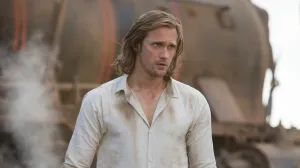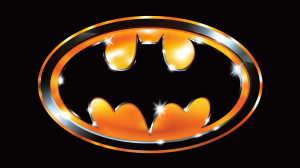Frank Darabont, the filmmaker behind The Shawshank Redemption and The Mist and the first showrunner of AMC’s The Walking Dead, will launch his latest TV project–TNT’s Mob City–on December 4.Darabont joined a group of reporters on Thursday to discuss the new series, and ComicBook.com was there.I know this is based on true events, but I was wondering how did you sort of frame it; I’m sure some of it isn’t. It’s fictionalized for drama, and I was wondering, you know, what’s true and what’s not?Frank Darabont: It’s an excellent, excellent question because this is honestly the loosest adaptation I’ve ever done. It’s not in any way to disregard John Buntin’s book because it really is the inspiration for everything. It’s really a good book, definitely our touchstone. I gave myself license very early on to just make up as much of I felt we needed to make up to tell the most entertaining, good sort of meaty, you know, mob story, good, pulpy, good, noir stuff.I mean that’s the promise that I wanted to deliver on, and not turn it into sort of the, you know, the Masterpiece Theater docudrama version of events. So, yeah we’ve thrown caution to the wind on this one. Bless his heart John is abundant; he seems to be definitely enjoying the fact that we’ve done that. So we’re weaving fictional elements very much into the non-fictional historical elements and having a blast doing it. Hello? I hope I didn’t lose this call.Let’s continue on with what you were just talking about with the book, expand on that a little bit. Talk about what initially got you interested in that book, and how you ultimately decided to flip that interest into this series.Darabont: It was one of those book by its cover kind of deals. I was in the newsstand at LAX before jumping on a plane. I poked my head in and I saw this book called L.A. Noir. Noir being right up my alley and L.A. being a great component of Noir. I grabbed the book thinking that it actually might be some fictional thing, and then wound up realizing as I was flying that it was non-fiction history of this, which actually made the book even cooler to me. I couldn’t put it down for a two days.Once I had read it I immediately made a call to find out if the rights were available. Sorry there’s a disaster befalling us here in the room. There’s shit falling everywhere. Hang on a sec Patrick we’re switching over to a landline and guys are dropping stuff everywhere. Sorry about that. Patrick are you still there? Guys this is not the time to be doing this, please get out of here.I mean it’s just such a–it’s such a fascinating history. I mean it’s just utterly absorbing. I couldn’t put the book down. John Buntin, you know, the way he–I so recommend the book. He’s just a compelling historian and brilliantly entertaining writer.So, yeah so I checked into the rights only to discover that my friend Michael De Luca, whom I’ve known since gosh, 1986 when we were–I was on my first produced credit as a writer in Nightmare on Elm Street III. I met him. He was a young executive just hired by New Line, so we got to be friends on the set of Nightmare III.I’ve known him all these years. I call him up and, you know, to find out what he wanted to do with it, and he was excited about my interest. So we decided to partner up on it. It was a real pleasure. It’s been a real pleasure to work with Mike, you know, after all these years.First of all, it’s amazing to see these bookstores in (LAX), they’ve started so many projects movie wise and TV wise.Darabont: Oh, have they? I’m not surprised.You’re not the only one telling that story. My question is more, you know, I started watching it and I’m immediately drawn in. It’s so sensual, so rich. What do you say this time, you know, 1947 or this time of the gangster, is it a little more sexier time, was it a more dangerous time than it is today and why?Darabont: It certainly seems to me that it was, but then I’ve always had a tremendous appreciation for past eras. I’ve always had specifically a very keen appreciation for this era in the 40s. There was something very sexy and dangerous about it. Plus, it was a much more–what’s the word I’m looking for? It’s in a much more put together era. It’s a much more elegant and, you know, people would dress a certain way.They didn’t just walk out of the house wearing their underwear, or whatever people, you know, wear these days. They had to put thought into it. They presented themselves well. That’s a wonderful thing to put on film because everyone just winds up looking so of the era, but also just of a different world. It’s as unique; visually it’s as unique as a science fiction movie because it is such a different world then.I’ve always loved it. I love the clothes. I love the cars. I love the music. It’s a wonderful period to depict. Challenging of course, because L.A. has changed so much but we’re finding those little corners and those little pockets of, you know, the old stuff. Then, you know, thankfully with some digital–some careful digital trickery, digital effects we can, you know, we can enhance the era and make that, you know, make it ever more convincing.I love it, and I’ve always loved the Noir genre because it’s always got an air of dangerous stakes and desperation and, you know, (quarks and cops) and everybody’s got an angle, and there’s the dangerous women, you know, you don’t know if they’re on your side or not. I always have loved that kind of storytelling that kind of–that genre and it’s just a pleasure to just roll around in it. I just love it.You kind of answered it a little bit in the last question, but if you want to go a little further with that, one of the things that I really love about television shows like this, is the time period it’s set in. As a filmmaker and television fan, I really like this time period for shows and movies, because of the business and the movies that came out at the time. I’m curious as a show creator and a filmmaker, what’s an aspect from that time period that you wish you could’ve experienced?Darabont: Oh, I wish I could’ve experienced the time period, you know, firsthand. You know, I’m glad I’m not 100 years old, but if I had a time machine and I could punch in a year, it would be post war. It would be, you know, 1940s. You know, during the war and post war. It’s just so remarkable what happened to Los Angeles specifically is so amazing post war, because the city just started to grow and expand in a way that was unprecedented. It’s still growing and expanding.Great opportunity for corruption and mobs and that’s basically what the story is dealing with, that post war influx of growth and money, and influence and all that stuff. It’s a great place to be in.I wanted to ask about Jon. He’s a great choice, but I’m seeing it after the fact and recognizing how great a choice. What was it that made you know beforehand that he’d be so right for this?Darabont: You know, when I first started working with Jon some years ago, the first time I worked with him I had the thought in my head, if I ever get to do a Noir project, I’m going to want him to play my Noir hero. I’m going to want him to play my lead, because he’s got that very period feel to me. He doesn’t come off as like, you know, like a contemporary guy.Plus, he’s got this tremendously quiet, masculine, it’s not forced; it’s not, you know, showboat, but he’s got this very testosterone kind of masculinity that’s quiet, and it’s genuine and it feels like such a throwback to me to Robert Mitchum and John Garfield.You know, an earlier era of actor, of actor, of men who came up in tougher circumstances during the great depression, and fought in those wars, and just had to go out, you know, get through life as best they could without making a big deal out of it. You know, it’s just such a throwback aspect to it. He so reminds me of those guys and those generations.So for me it was, you know, just a self-evident marriage of, you know, a certain kind of story that I wanted to tell. This actor who would be so, you know, perfect to tell that story.Even though this is a fictional telling of the story, were there any particular elements that you really wanted to make sure to keep historically accurate?Darabont: Well, even in our historical accuracy we’re taking liberties. So, I always say thank God it’s not a, you know, a documentary. Certainly the, you know, on the very basic level, on a core level of what John wrote, John Buntin and what we’re going to be telling is the, really the focus of the mob versus the police, really came down to the story of Mickey Cohen versus William Parker.John did a brilliant job of detailing; distilling everything to that dynamic, because it really was the fulcrum point of so many events and the entire power struggle, those two men butting heads. So that’s very much in the long game of the show. I wanted to be very accurate with the fact that Mickey Cohen rises to prominence as the head of the L.A. mob very much around the time or not too long later William Parker rises to the head of, you know, the L.A.P.D.Suddenly, you’ve got these two guys who are running their shops, top of the show in their worlds, and their worlds conflict. Really fascinating set up for storytelling and John Buntin really delineated that so beautifully in his book.









